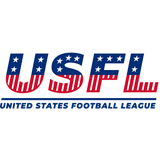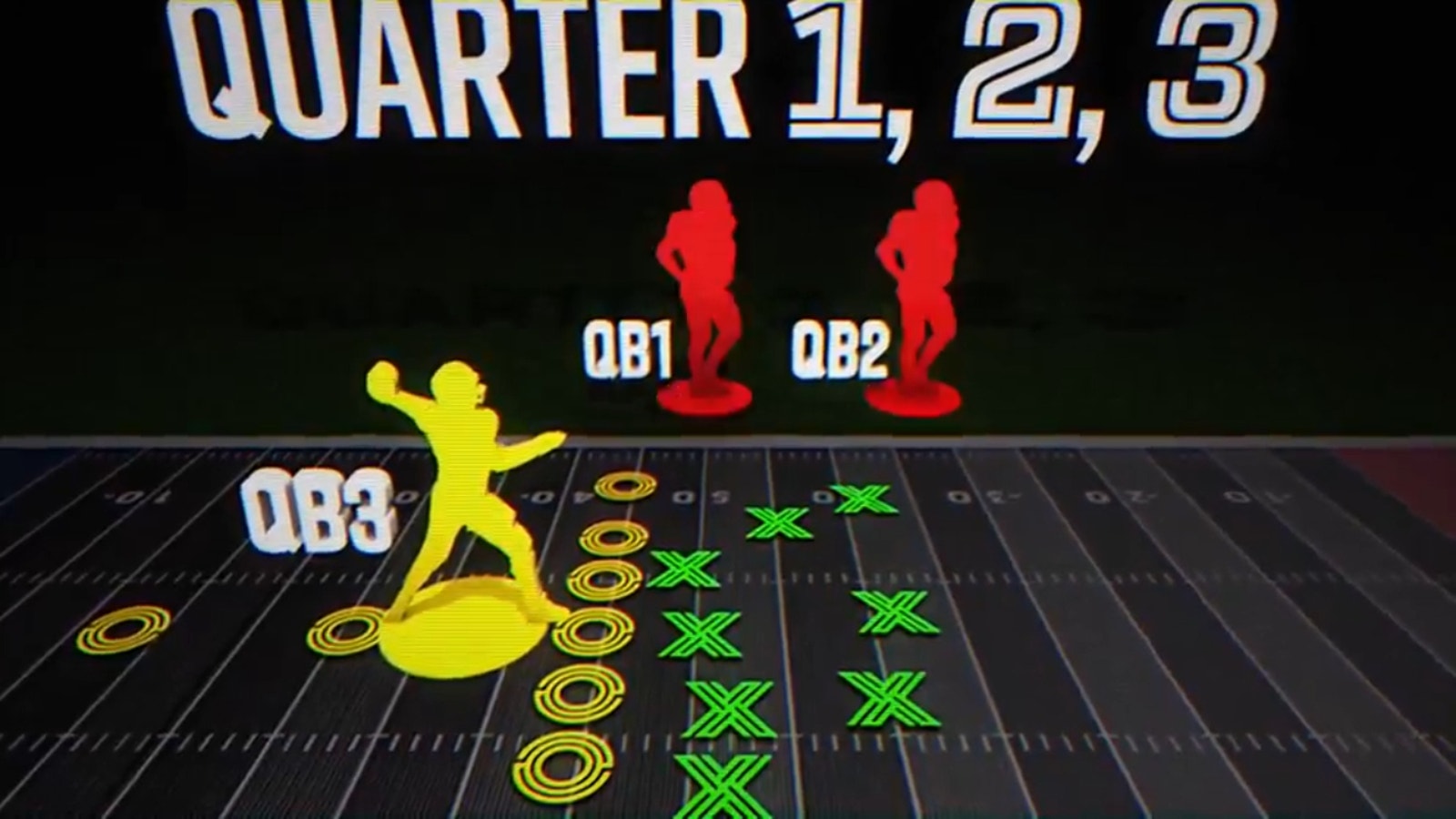
USFL adds new rules for 2023, brings back popular innovations from last season
MEMPHIS, Tennessee — When the Memphis Showboats take on the Philadelphia Stars in the USFL’s 2023 kick-off game on Saturday (4:30 p.m. ET on FOX and the FOX Sports app), they’ll be playing a traditional brand of football familiar to fans of the pro and college games, but with modern twists that aim to promote evolution of the sport.
During a successful first season in 2022, the USFL introduced groundbreaking rules that proved to be hits, including bringing back traditional kickoff returns while maintaining player safety, creating an electrifying and time-efficient overtime shootout, adding the possibility of 9-point scores with 3-point, 2-point or 1-point conversion opportunities, allowing double-forward passes, and introducing a "fourth-and-12" play as an alternative to rarely successful onside kicks.
"The USFL prides itself on being the most fan-friendly professional sports league in America, so last year, we implemented rules we thought worked at the professional and college levels while adding some of our own innovations to give fans the traditional play they know and love with more fast-paced elements," said Mike Pereira, USFL Head of Officiating. "We’re proud our rules started a conversation throughout the football landscape that delivered big play potential, enhanced player safety, improved game flow, provided more scoring opportunities for trailing teams, and centralized replay to get officiating calls right in a way that’s fair, transparent and fast."
Now, as the USFL enters its second season — the first nationally televised professional spring football league in nearly 40 years to do so — the league is once again adding innovative new rules that give fans more action while increasing fairness.
Here is a look at some exciting new rules, plus a rundown of some of the popular innovations from 2022 that will return this season.
KICKOFFS ARE MOVING BACK
Kickoffs will start from the 20-yard line this season, five yards further back than last season. Kicking team members must line up within one yard behind the 20 and must be stationary when the ball is kicked. Receiving teams must have at least eight and no more than nine players lined up in a set-up zone between their 30- and 40-yard lines.
Kickoffs that go out of bounds will be placed 30 yards from the spot of the kick — normally, the receiving team will take possession at the 50-yard line.
The change is designed to create more, yet safe, kickoff returns, and increase the potential for big plays.
PUNTS
Gunners may not line up outside the numbers when the ball is snapped, and they cannot be double-team blocked until the ball is kicked. This change is designed to reduce player injuries and penalties, and to improve game flow.
FUMBLES
A ball fumbled forward from the field of play into the end zone and out of bounds will no longer be a touchback, but will be returned to the spot of the fumble with the fumbling team retaining possession.
This change would remove an inconsistency in the sport — other forward fumbles that go out of bounds are placed back at the spot of the fumble with the fumbling team retaining possession — and increase fairness.
EMERGENCY QUARTERBACK
Each team will be allowed to carry an inactive third quarterback to be used on an emergency basis. To ensure fairness, if the player is activated and enters the game anytime in the first three quarters, the first two quarterbacks cannot re-enter the game. If the QB enters in the fourth quarter, the original two quarterbacks may reenter.
This change is designed to maintain consistent quarterback play throughout games, even in the face of unexpected injuries.
INSTANT REPLAY AND USFL COMMAND CENTER
USFL Command Center in Los Angeles will make all replay decisions. Command Center will be in contact with the referee to aid the official in penalty enforcement and timing. Command Center can review reviewable plays without a coach having to challenge if the ruling is deemed to be obviously incorrect. Command Center will review all scores and potential scores. When determining a catch or incomplete pass, Command Center will review control and two feet (the element of time is left in the hands of the on-field officials).
Also, each coach will be allowed one replay challenge.
USFL Command Center can also overrule incorrect personal foul calls, including roughing the passer, hits on defenseless players, facemasks, horsecollars and more. Command Center may change a 15-yard pass interference foul to a spot foul if it is determined to be flagrant when it occurs 15 yards beyond the line of scrimmage.
These changes are expected to have a number of effects, from centralizing the replay crew to achieve faster, more transparent and more consistent rulings, to improving game flow, getting more calls right and achieving fairness.
TIMING
The clock will start after incomplete passes in the entire first and third quarters, and outside five minutes of the second and fourth quarters.
When a runner goes out of bounds, the clock will start on the ready-for-play except inside two minutes of the second and fourth quarters.
The clock will remain stopped after a penalty inside two minutes of the second and fourth quarters. The clock will stop after a first down inside two minutes in the second and fourth quarters. The halftime length is 10 minutes. The play clock is 35 seconds.
These rules are designed to keep game lengths to less than three hours while creating more offensive plays during the final minutes of each half.
ONSIDE KICK VS. SCRIMMAGE PLAY
As in 2022, teams will have two options to keep possession of the ball after scoring. The first option will be a traditional onside kick attempt from the 20-yard line. The second will be running a "fourth-and-12" play from their own 33-yard line. If the team makes a first down, it retains possession. If it fails to make a first down, then the opposing team takes over at the dead ball spot.
This allows coaches to scheme for these situations differently, beyond simply opting for the onside kick, which is rarely executed successfully.
OVERTIME SHOOTOUT
Overtime remains a best-of-three-play shootout. The winner of a coin toss may choose to go on offense or defense first and USFL Command Center will determine which side of the field will be used. Each team's offense will alternate possessions against the opposing defense from the 2-yard line. Each successful scoring attempt will receive two points. The team with the most points after three possessions wins. If the score is tied at the end of three possessions for each team, overtime advances to sudden death. Each team will get one possession and will continue until there is a winner.
This rule gives both teams an equal chance of winning, is more exciting, and is time-efficient in a way that enhances player safety.
EXTRA POINTS
After scoring a touchdown, teams will have three options to attempt extra points. They are:
- One point for a successful kick between the uprights snapped from the 15-yard line.
- Two points for a successful scrimmage play from the 2-yard line.
- Three points for a successful scrimmage play from the 10-yard line.
If the defense scores on an attempted try, it will be a 2-point score regardless of the try attempt. Prior to the extra point, the scoring team cannot change its original option unless a timeout is used or the defense commits a foul prior to the snap.
These options add excitement by improving the chances of late comebacks, giving the trailing team a chance to make up larger deficits with an opportunity for nine-point scores.
TWO FORWARD PASSES
The offense can throw two forward passes from behind the line of scrimmage. Ineligible receiver rules apply to the second forward pass.
This rule gives coaches more opportunities to use innovative, exciting trick plays.
PENALTIES
Defensive pass interference: The penalty for defensive pass interference will mirror the NCAA rule with exceptions. First, a defender intentionally tackling a receiver beyond 15 yards would become a spot foul (determined by USFL Command Center). Also, the penalty will be a spot foul if it occurs 15 yards or fewer from the line of scrimmage or a 15-yard penalty from the line of scrimmage if the spot of the foul is beyond 15 yards.
Offensive pass interference: If a pass does not cross the line of scrimmage, there can be no pass interference or ineligible player downfield penalties.
The rules are designed to reduce penalty yardage, decrease the punitive nature of these penalties and add offense without undermining the defense.
More on the USFL:
- USFL 2023: How to watch, team previews, best players
- The full week-by-week 2023 USFL schedule
- Five potential USFL MVP candidates to keep an eye on ahead of 2023 season
- Michigan Panthers preview: Rising defense under Mike Nolan
- Pittsburgh Maulers preview: Fresh faces and a fresh start?
- Birmingham Stallions preview: Champs look to run it back
- New Jersey Generals preview: Building on a 9-1 season
- Memphis Showboats preview: QB Brady White to steer the ship
- Houston Gamblers preview: A focus on team speed
- Philadelphia Stars preview: Championship or bust
- New Orleans Breakers preview: Back to the postseason?






